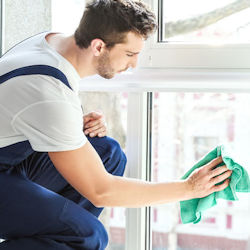Ergonomic Injuries
OSHA defines ergonomics as the science of designing jobs, equipment, and workplaces to fit the person.

When effectively applied, it helps lessen muscle fatigue, increases productivity and reduces the number and severity of work-related musculoskeletal disorders (MSDs).
MSDs are injuries or disorders of the soft tissue (muscles, tendons, ligaments, joints, and cartilage) and nervous system. MSDs include the following types of injury:
- pinched nerve;
- herniated disc;
- meniscus tear;
- sprains, strains and tears;
- hernia (traumatic and nontraumatic);
- pain, swelling, and numbness;
- carpal or tarsal tunnel syndrome;
- Raynaud's syndrome or phenomenon;
- musculoskeletal system and connective tissue diseases and disorders, when the event or exposure leading to the injury or illness is overexertion and bodily reaction, unspecified;
- overexertion involving outside sources;
- repetitive motion involving microtasks; and
- other and multiple exertions or bodily reactions; and rubbed, abraded, or jarred by vibration.
Janitorial and housekeeping tasks can cause ergonomic injuries if tasks are not performed correctly. For instance, some housekeeping tasks can put too much pressure on the discs in the back. Other housekeeping tasks can cause a lot pain in the neck and shoulders (e.g., irritated, swollen, or torn tendons).
Some examples of common housekeeping tasks that can cause ergonomic injuries to the back, neck, tendons, and muscles include:
- lifting, lowering, pushing, or pulling heavy mattresses, furniture, supply carts, or vacuum cleaners;
- twisting, especially while lifting supplies, equipment, furniture, or laundry;
- performing tasks requiring awkward postures such as while cleaning floors;
- bending at the waist while picking up objects or equipment; and
- prolonged repetitive motion using the same hand or arm while washing or dusting.
- increased grip force while using tools and equipment.
Knowledge Check Choose the best answer for the question.
3-3. The science of ergonomics attempts to _____.
You forgot to answer the question!
